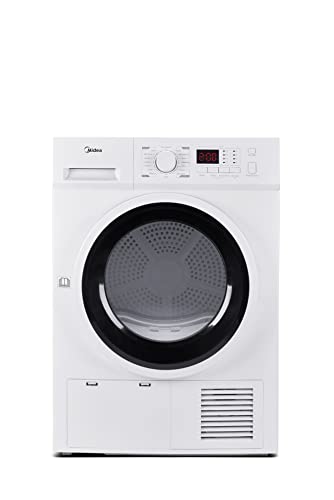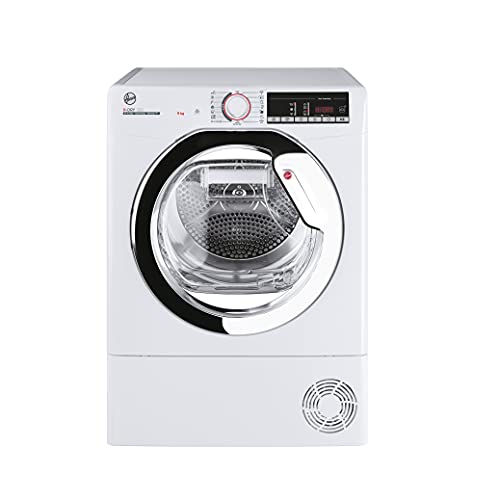Washer Dryer Heat Pump Tools To Enhance Your Day-To-Day Life
페이지 정보
작성자 Andy 작성일24-06-01 00:20 조회16회 댓글0건관련링크
본문
 Heat Pump Washer Dryer
Heat Pump Washer Dryer Heat pump dryers use refrigerants and compressors to convert thermal energy from hot air into cold. They then condense the moisture that your clothes absorb. They're generally about 28 percent more efficient than vented dryers.
Heat pump dryers use refrigerants and compressors to convert thermal energy from hot air into cold. They then condense the moisture that your clothes absorb. They're generally about 28 percent more efficient than vented dryers.The dryers don't vent outside and they are less noisy than conventional vented machines. These dryers are also good for apartments, where it's not possible to punch holes in the walls for vents.
Energy Efficiency
The laundry industry is looking for ways to reduce the energy use in their facilities. One possibility is to replace dryers and washers with more efficient models however another option is to make use of a heat pump washer dryer to save even more energy while doing a load of laundry.
In a heat pump tumble dryer reviews-pump washer dryer hot drier air is used to remove moisture from the clothing. The air is then moved into the dryer's Evaporator, which cools and evaporates the water. The vapor is then condensed into droplets that are collected for drainage. This system uses less energy than a dryer that blasts warm, moist, air out through the vent.
Heat pump washer dryers use around 28 percent less energy than traditional washer dryers. The savings in energy can add up, particularly if the dryer is used regularly enough to pay for the initial investment.
Heat pump washer dryers are energy-efficient since they don't generate heat themselves by using electric coils or burners. They move thermal energy in an enclosed loop. They collect and recycle hot air from inside the drum, and then transfer it to the evaporator and then back to the drum to repeat the process.
These dryers are also more environmentally friendly than traditional dryers that exhaust conditioned outdoor air through the vent. The air that is conditioned has already consumed a lot energy and money in the form of air conditioning to reduce the temperature or a furnace to heat the temperature inside the building.
A hybrid sorption heat-pump washer heatpump dryer can be more efficient than an electric model. The sorption component of the process is the most labor-intensive however it can be combined with the most advanced Heat Pump Technology (Www.Washersanddryers.Co.Uk) available to create a very efficient machine. This combination of sorption and heat pumps was first conceived by Khouya and Cranston, and they have analyzed the way that various parameters like optical efficiency, concentration ratio, and heat pump technology temperature of the evaporator impact the performance of the system.
Condensation
The heat pump dryers, unlike conventional dryers, circulate heated air. This makes them better for the environment and they are cheaper to operate over the long run. However, it is crucial to be aware that recirculating hot air can cause condensation inside the dryer, which can lead to mold and mildew problems.
Condensation occurs because the recirculated air loses energy due to internal losses. This will tend to slightly overcompensate for the heat lost through the evaporation of clothes, which will cause the temperature of the air circulating to rise. As the hot air recirculates on the cold side, it absorbs the water vapour that is emitted from wet clothes. It transforms into liquid water, which then is dripping into a lint tube or tray.
To prevent the growth of mildew and mold, empty the lint tube or tray when it is full. Regularly cleaning the trays is also essential. The majority of the trays can be removed to make cleaning easier. It's also important to keep the lint filter clean inside the dryer to avoid blockages and condensation.
Another potential problem with the condensation created by heat pump dryers is that they can take longer than conventional dryers to dry an item. They operate at a lower temperature, which makes it more difficult to dry the clothes.
Also, you should look for leaks in your ventilation system. If the duct is damaged, it is likely to leak water and causing the condensation issue. The duct for ventilation should be sealed properly to prevent water leaking from the dryer into the home. It's also important to keep the vent hose in a good position, and not allow it to hang too low, which can cause condensation. The vent duct must also be inspected for blockages due to debris and lint that can build up over time and cause a venting problem.
Noise
The heat pump inside your dryer produces low humming sounds when it is operating. This is a normal sound and it is an indication that the system is operating properly.
If you do hear sounds of rattling, or scraping during the process of washing, this can be an indication that your machine is rattling against walls or other appliances. If this is the situation, you can move your dryer away from obstructions to eliminate the noise. If you hear a rattling sound coming from your dryer, it could be an indication of loose components or a blocked airflow.
Overloading your Miele dryer with clothes can cause it to shake. This could cause the dryer to work harder to turn. Remove some of the clothes to ease the burden.
The drum bearings could cause a rattling. They can wear out and cause an ear-splitting sound over time. Check to see if the bearings are in good shape. If not, you may think about having an expert replace them.
The baffles of your dryer may produce a noise during drying. They are ideal for preventing your clothing from sticking to each other and help with the fluffing and tumbling of your clothing. If your baffles are worn or have loose change, they could be pushed against the side of the drum and create a clumping or sounding like a thumping. Examine the baffles to determine whether any items are stuck, and clean them if needed.
If the noise originates from your blower wheel, this is an indication that it's out of balance or loose. The wheel circulates air through the dryer and out of the exhaust vent. If it's loose or blocked with lint or debris, this can cause it to make the sound of a rumbling.
If your Miele dryer continues to make loud grinding and rattling noises after you've tried all of these troubleshooting steps, it may be a defective component. It's likely to require the removal of the cabinet and dryer drum to discover what's causing the problem, so it's best to contact an expert in appliance repair for assistance.
Maintenance
Simple maintenance tips can avoid numerous problems with your dryer and washer. For instance, cleaning regularly the lint trap and the slot will help you save on energy bills and cut down on drying time. Keep up with the manufacturer’s recommendations for the condenser.
The dryers that heat pump use have an additional filter, in addition to the regular lint-trap. This protects the coils against the lint in the recirculated lint. The filter should be cleaned at least every few cycles with a cloth and dish soap or vinegar. Maintaining the moisture sensor is also important. The sensor for moisture is located inside the door, heat pump technology and it is used to tell when a load has reached an appropriate degree of dryness. It is important to regularly clean your sensor with a soft, damp cloth and a little water or mild dish soap.
If your dryer takes longer than normal to finish a cycle, you might need to clean the heat-exchanger. This is a simple procedure to do every month. Take the drain hose off (A) first. Then, mix neutral detergent with some lukewarm water. Then, place the one end of the accessory hose in the hole (B). Then, insert the other end into the hole (A). Let the mixture soak for 30 minutes and then wash it off and dry it.
댓글목록
등록된 댓글이 없습니다.

